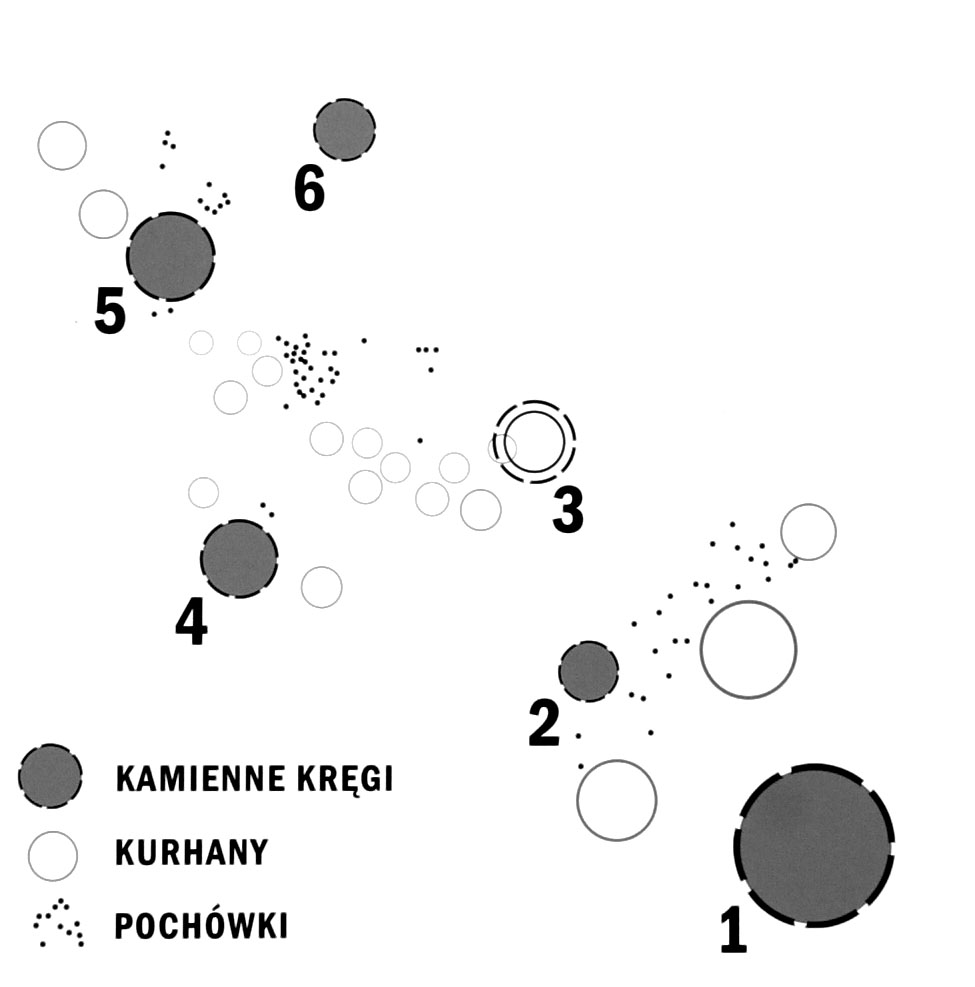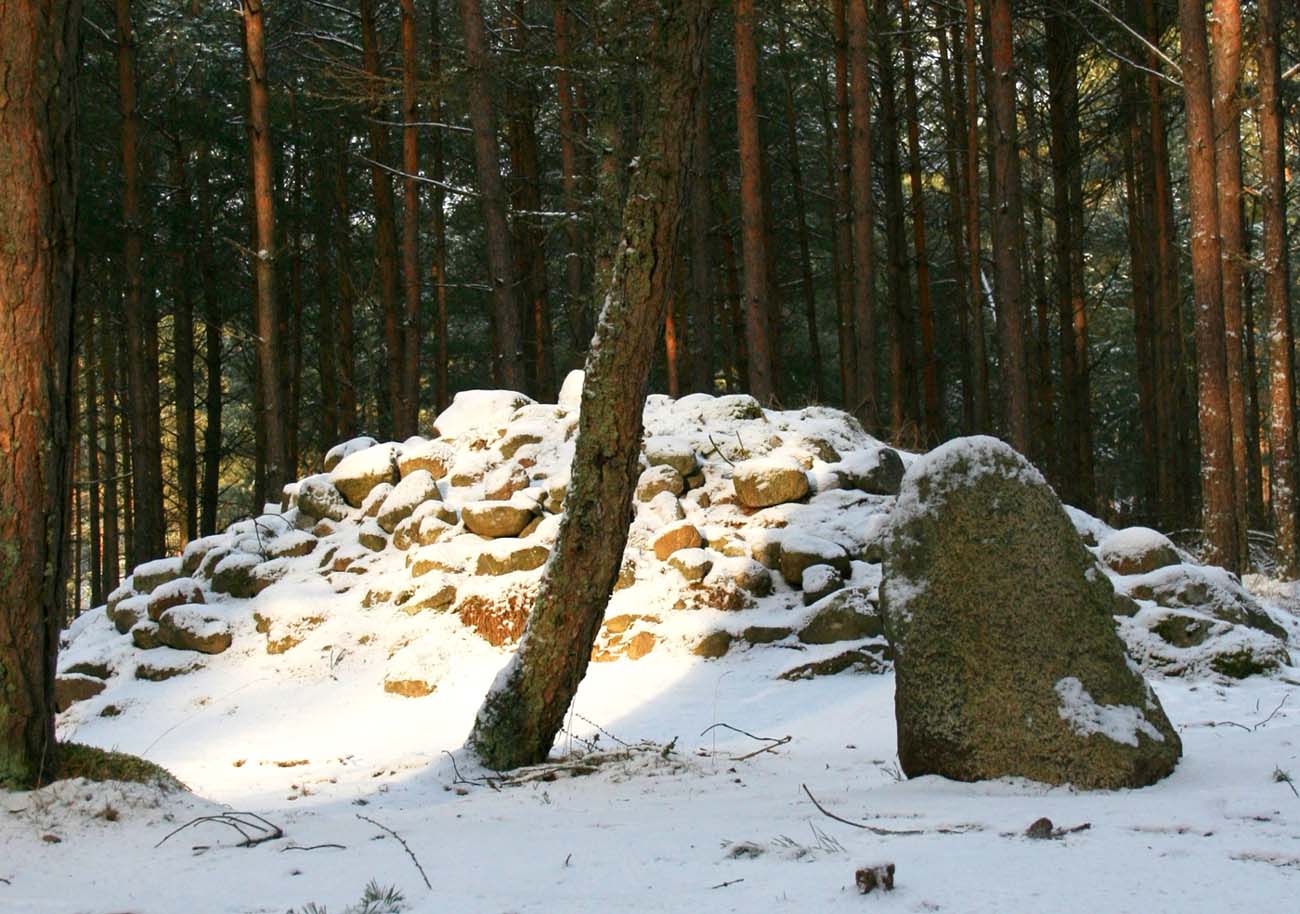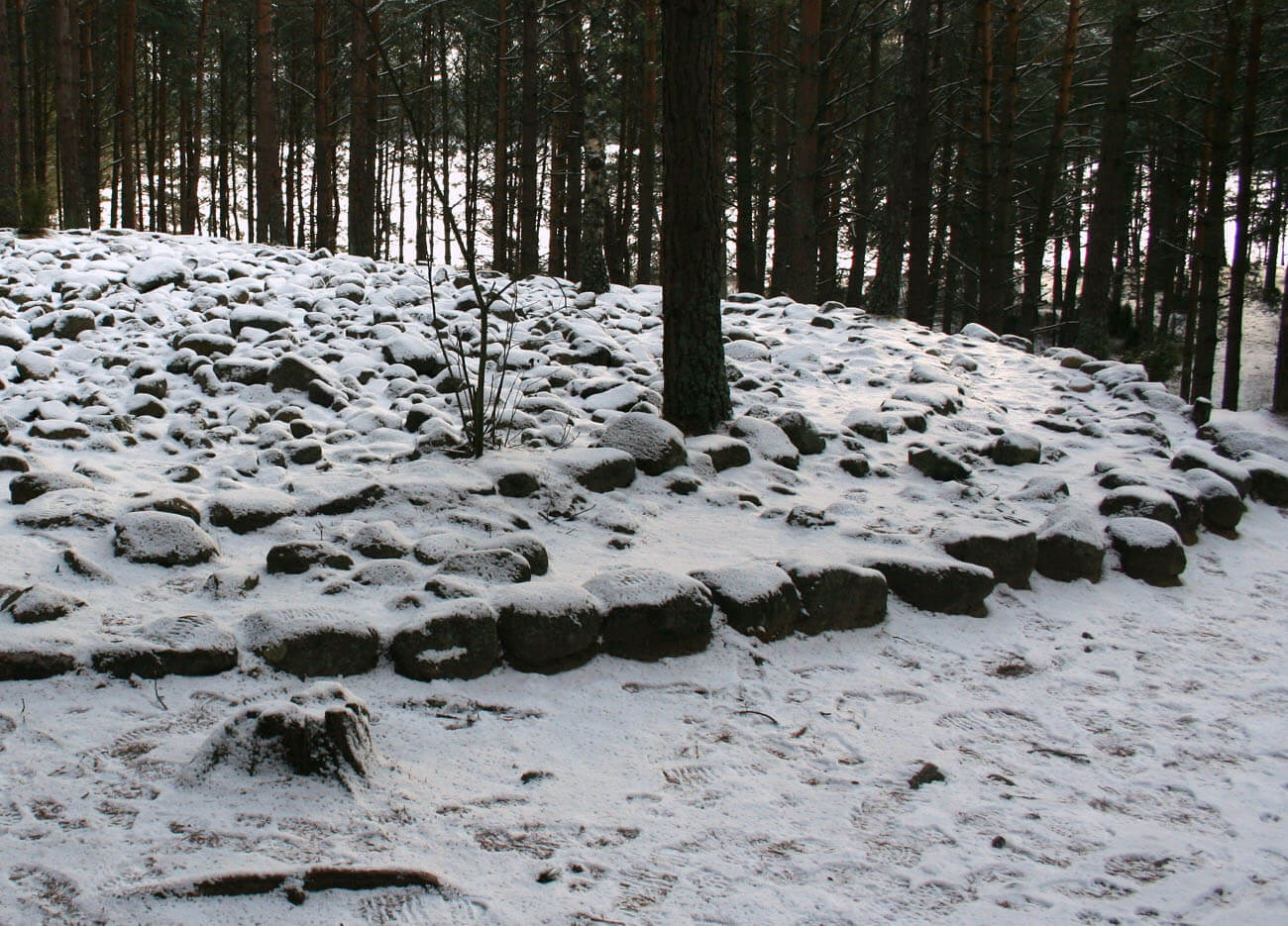History
The cemetery was established around the 1st-3rd century AD. Its beginning is considered to be the 70s and 80s AD, i.e. the time of the arrival of the Scandinavian Goths and Gepids in Pomerania, from the area of today’s southern Sweden. The migration of these peoples contributed to the emergence of the culture known as Wielbark in Poland. Around 200, the newcomers left Pomerania, continuing their journey south. They moved through Mazovia, the eastern part of Małopolska, Podlasie and Volhynia to Ukraine and as far as Romania. There, under Ermanaric, they formed a strong tribal union that threatened the neighboring Roman provinces.
Stone circles were a specific manifestation of the social life of the North Germanic population. It were cult structures which, despite the presence of a cemetery in the area, did not only play the role of a necropolis. It is believed that the circles were places of tribal and ancestral assemblies, the so-called things, and probably also places where rituals and sacrifices were performed. During these celebrations, public affairs were intertwined with magical procedures. Perhaps fortune-tellings were carried out and decisions were made with the help of sacrifices. The vicinity of the burials of deceased ancestors could create the atmosphere of a peace, necessary when taking up disputes. The neighborhood of the circles with the cemetery was a guarantee of seriousness, limited the will to draw the swords and called to consent.
According to tradition, Scandinavian things, or tribal assembly, were held in the open air, in circularly fenced places. With the consent of the gathered, resolutions were adopted, disputed cases were examined, and courts were held. In the first centuries of our era, the things were called twice a year: in late spring and late autumn, that is, at times similar to summer and winter solstices. Cattle, food and drink were sacrificed on the things, and human sacrifices were made during the main things.
Architecture
The cemetery was situated on the north-western shore of Lake Długie, on a high hill. It consisted of at least four stone circles and about 20 barrows. The diameter of the largest circle was 26 meters. The stones were dug into the ground vertically, at regular intervals, while in the center of almost each ring there were single stele-shaped boulder (large stone protruding vertically). Each circle consisted of erratic stones about 1.5 meters high, which were subjected to some tooling after they had been collected. Squat bases were created, and one of the wider sides was made smoothnes, to direct it with oval face towards the inside of the circle. The boulders were dug up to a depth of no more than half a meter. In some circles, boulders were surrounded by small stones at their base.
The crematory or skeletal graves were located in various places, but only within the circles and under the barrows. It was unique because the stone circles in other Goth cemeteries did not have too many burials. In Węsiory, the circles contained them, except for a large circle called the Court’s Circle, situated in the upper part of the complex. Cremation burials were usually placed at a depth of 0.5 to 1 meter, and skeletal burials at a depth of 1.5 meters to 2 meters. The burial mounds had circular bases with a diameter of 4 to 16 meters and sometimes also stone steles at the top.
Current state
Three stone circles and part of the fourth one and 20 barrows have been preserved in the cemetery. In addition to them, in Węsiory you can see an open-air museum, a reconstruction of a Goth stronghold, referring to the era of Migration Period. Among the huts and defense facilities there are concerts, theater and ceramics workshops, demonstrations of knight fights and dancing, and the so-called Goths feast.
show megalithic graveyard on map
bibliography:
Breske A., Ellwart J., Kamienne kręgi Gotów, Gdynia 2018.
Website suleczyno.pl, Cmentarzysko z kręgami kamiennymi w Węsiorach.




